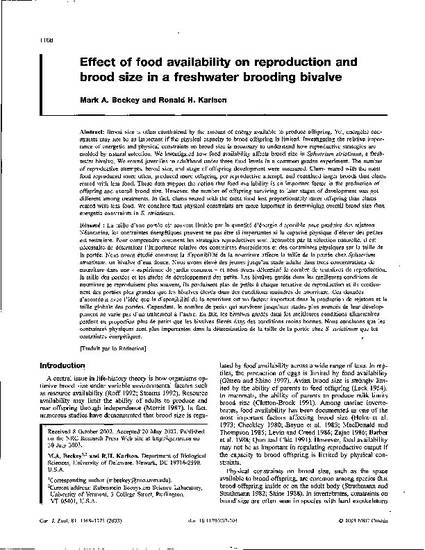
Brood size is often constrained by the amount of energy available to produce offspring. Yet, energetic constraints may not be as important if the physical capacity to brood offspring is limited. Investigating the relative importance of energetic and physical constraints on brood size is necessary to understand how reproductive strategies are molded by natural selection. We investigated how food availability affects brood size in Sphaerium striatinum, a freshwater bivalve. We reared juveniles to adulthood under three food levels in a common garden experiment. The number of reproductive attempts, brood size, and stage of offspring development were measured. Clams reared with the most food reproduced more often, produced more offspring per reproductive attempt, and contained larger broods than clams reared with less food. These data support the notion that food availability is an important factor in the production of offspring and overall brood size. However, the number of offspring surviving to later stages of development was not different among treatments. In fact, clams reared with the most food lost proportionately more offspring than clams reared with less food. We conclude that physical constraints are more important in determining overall brood size than energetic constraints in S. striatinum.
